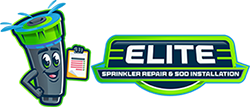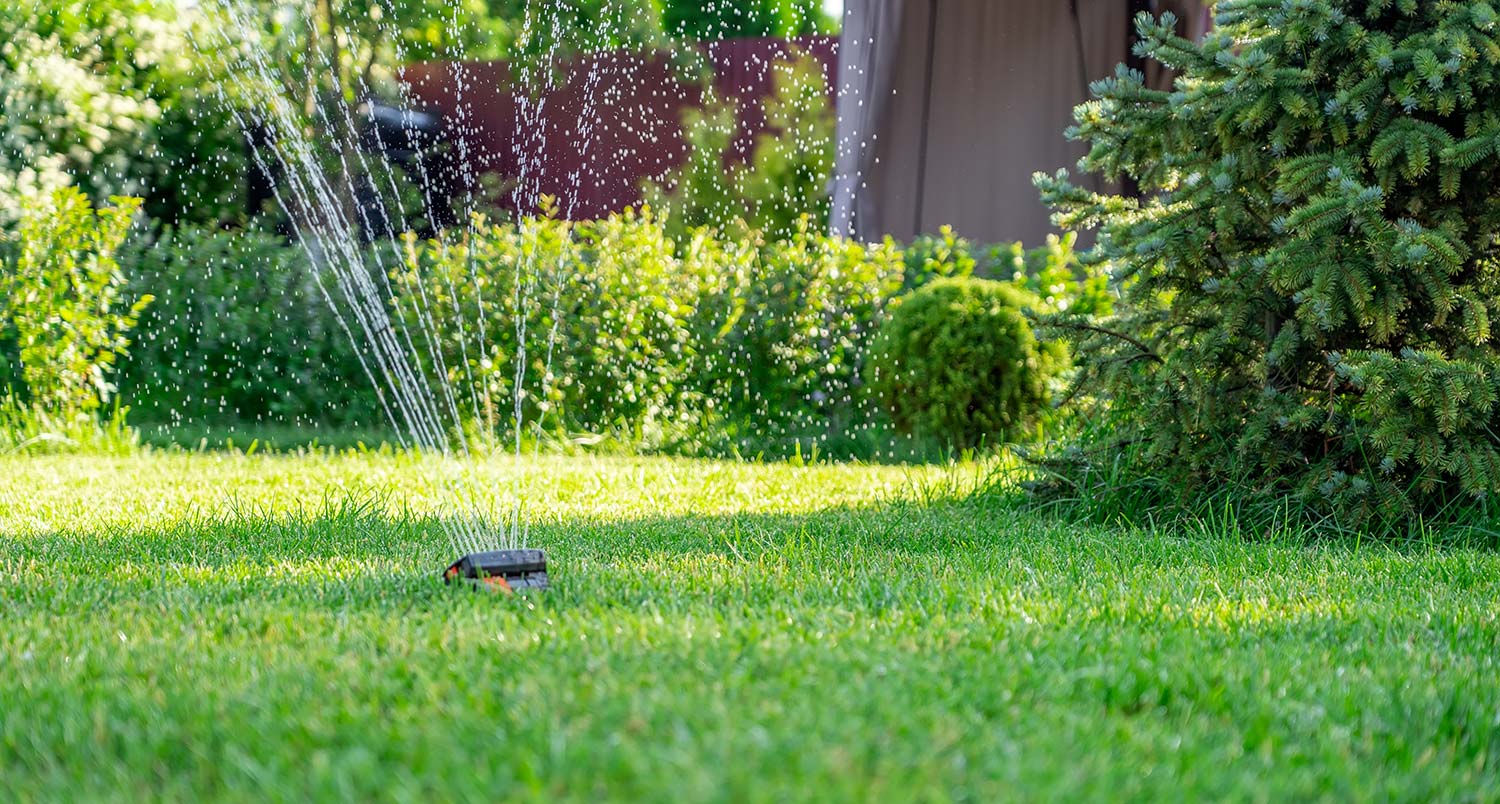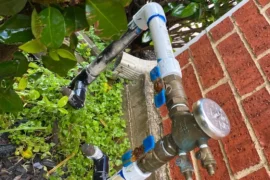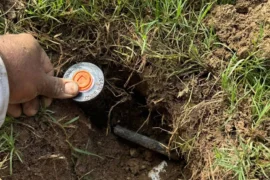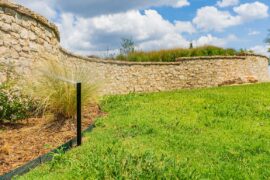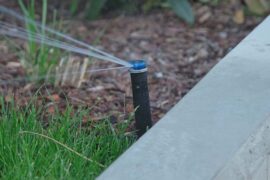What is the better method to water the lawn- using a sprinkler system or the good old manual method? Opinions vary on the subject. Should you use a garden hose fitted with a spray nozzle or a rotor system? There are also units with pop-up sprinklers, too.
Here is a detailed comparison between sprinklers and hand watering to help you make a decision:
Coverage Vs Control
Initially, you may feel that using a hose-end sprayer manually will give you good control over water distribution. This seems effective, but just think deeply, and you will realize why manual watering can be so inconsistent.
- No matter how much you try, some areas of the lawn will be missed with the manual method! Some patches will still be dry, while others will become overly wet.
- Most people do not realize that they rush while watering manually, leading to shallow penetration. However, using a rotor head or an oscillating sprinkler offers better results.
An ideal sprinkler system can apply 1.5 inches of water every week, depending on the climatic conditions and soil type. Large lawns do not benefit much from hand watering.
Water Wastage – Which One Fares Better?
You may feel hand watering is more effective, but the opposite is true. A well-calibrated sprinkler system helps reduce water wastage.
- Runoff – Manual lawn watering may overwhelm the soil, especially for yards with heavy clay. That excess water will run off even before the grass can soak it in.
- Excess water – Unless the precipitation rate is regulated, some patches of the lawn will get excess water, leading to fungal growth and stunted root growth.
- Lack of evaporation – Sprinklers, typically those fitted with high-efficiency MP rotators, offer controlled water delivery, leading to proper moisture absorption by the soil. When you water the lawn manually, it causes evaporation loss.
A regular hose-end sprayer will put out up to 5 gallons per minute, and a well-designed irrigation zone uses 1-2 gallons per head every minute. The difference with the latter is better distribution and less water wastage.
Effort And Time – Decide What You Want
There’s no denying that watering the lawn manually can be tiresome.
- If you have a large lawn, around 5,000 square feet, you will need approximately an hour to water it evenly.
- With sprinklers, you can cover the same area within 20 minutes or so.
- By using a smart irrigation controller, you don’t need to be present for the irrigation system to function.
Most people who try lawn watering manually will either overwater or leave dry patches. This happens because they tend to stand in one place too long.
Sod Root Growth And Lawn Health – What Scores Better?
A healthy lawn will need infrequent and deep watering, rather than light surface soaking. With manual watering, the soil’s top lawyer is wet. However, with sprinkler systems, you get deep penetration.
- If the grass does not get the required subsurface moisture, roots become affected by drought.
- Sprinklers help achieve deep root watering as they put out water at a balanced rate, resulting in reduced runoff.
With a typical hose-end sprayer, you can’t get the same consistency as with an irrigation system fitted with pressure-regulated heads.
Weather conditions
Keep in mind that sprinklers lose efficiency in high winds. In a hot climate, hand watering causes excessive evaporation. So, both methods have their drawbacks. However, modern irrigation technology is better as it can adapt to climate conditions.
- Smart controllers adjust to temperature and rainfall patterns for effective output.
- Drip irrigation complements sprinklers for precise deep watering.
- On hot and windy days, manual watering can be ineffective, leading to water wastage.
So, the bottom-line is that sprinklers are not foolproof, but they work better than the older hose-and-nozzle combination.
The cost factor – what hits the sweet spot?
Initially, you may feel manual watering is cheaper as there is no system installation cost. But what about the running cost?
- Manual watering requires more water due to inconsistent application, leading to higher water bills.
- You may not have enough time to water the lawn every week.
- Irrigation systems are worth the cost, as a decent sprinkler setup with drip irrigation helps reduce water usage by 30% or more.
A regular hose-end sprinkler may cost you around $50, but the water wastage is significant. A well-tuned irrigation system costs between $2,000 and $5,000 upfront, but the running cost is lower.
Who should still go for manual watering?
The reality is that not everyone will need a sprinkler system. Hand watering can work for smaller lawns and flower beds. Besides, you can do without an irrigation system if you rarely need to water the lawn. An Automatic irrigation system fits the bill when you live in a dry, hot region and have a big lawn.
Summing it up – who’s the winner?
Choose a garden hose to water a few potted plants or if you have a small lawn. However, for a larger lawn, sprinklers are the right choice. A sprinkler system scores better in the following areas:
- Deep root growth
- Enhanced coverage
- Efficient water usage
- Less time-consuming
- Weather pattern adjustments for smart controllers
The only limitation of sprinklers is their high installation cost, though that is balanced out with reduced water bills. So, in the final analysis, an irrigation system outshines the manual method in most departments.
